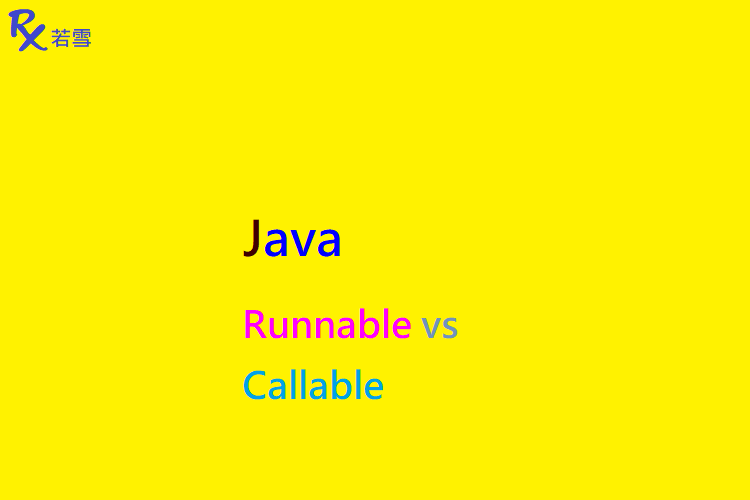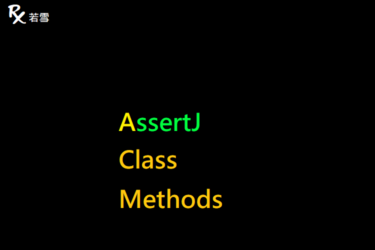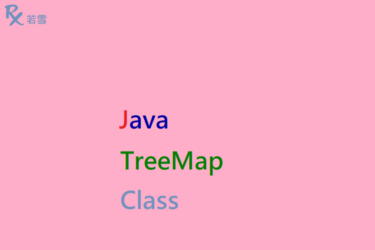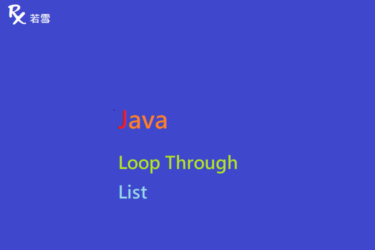Table of Contents
ToggleRunnable vs Callable in Java
多執行緒程式開發,是為了實現多工的同步執行,從而能夠更好地提高執行速度,多執行緒一直是 Java 的一個主要功能,Runnable 是為表示多執行緒任務提供的核心介面, Java 1.5 提供了 Callable 作為 Runnable 的改進版本, Callable vs Runnable in Java 提供這兩種介面的區別和應用,本篇增加了範例,並透過單元測試來驗證產出結果。
檔案目錄
./
+- src
+- test
| +- org
| +- ruoxue
| +- java_147
| +- multithreading
| +- callable
| +- RunnableVSCallableTest.java 單元測試
Java Runnable vs Callable 提供執行任務、傳回值、拋出例外等操作。
runner
Java Runnable vs Callable 實作 Runnable ,建立 1 條執行緒,執行 1 個任務,每個任務耗時 1 秒完成,執行緒池等待 3 秒然後結束任務。
protected class Runner implements Runnable {
@Override
public void run() {
try {
SimpleDateFormat sdf = new SimpleDateFormat("yyyy/MM/dd hh:mm:ss");
System.out.println(sdf.format(new Date()) + " T[" + Thread.currentThread().getId() + "] runner: ready");
TimeUnit.SECONDS.sleep(1);
System.out.println(
sdf.format(new Date()) + " T[" + Thread.currentThread().getId() + "] runner: finished");
} catch (Exception ex) {
ex.printStackTrace();
}
}
}
@Test
public void runner() throws Exception {
ExecutorService executor = Executors.newSingleThreadExecutor();
executor.execute(new Runner());
executor.awaitTermination(3, TimeUnit.SECONDS);
}2023/02/11 21:02:26 T[11] runner: ready
2023/02/11 21:02:27 T[11] runner: finished
caller
Java Runnable vs Callable 實作 Callable 建立 1 條執行緒,執行 1 個任務,每個任務耗時 1 秒完成,主執行緒會無限等待取得每個任務結束後的傳回值。
protected class Caller implements Callable<Object> {
private Object result;
@Override
public Object call() throws Exception {
SimpleDateFormat sdf = new SimpleDateFormat("yyyy/MM/dd hh:mm:ss");
System.out.println(sdf.format(new Date()) + " T[" + Thread.currentThread().getId() + "] caller: ready");
TimeUnit.SECONDS.sleep(1);
System.out.println(sdf.format(new Date()) + " T[" + Thread.currentThread().getId() + "] caller: finished");
result = "OK";
return result;
}
}
@Test
public void caller() throws Exception {
ExecutorService executor = Executors.newSingleThreadExecutor();
Future<Object> future = executor.submit(new Caller());
Object result = future.get();
System.out.println(result);
assertEquals("OK", ((String) result));
}
2023/02/11 21:03:09 T[11] caller: ready
2023/02/11 21:03:10 T[11] caller: finished
OKbrokenCaller
Callable vs Runnable in Java 實作 Callable 建立 1 條執行緒,執行 1 個任務,每個任務耗時 1 秒完成,執行緒拋出例外,主執行緒結束任務。
protected class BrokenCaller implements Callable<Object> {
private Object result;
@Override
public Object call() throws Exception {
SimpleDateFormat sdf = new SimpleDateFormat("yyyy/MM/dd HH:mm:ss");
System.out.println(sdf.format(new Date()) + " T[" + Thread.currentThread().getId() + "] caller: ready");
boolean flag = true;
if (flag) {
throw new IOException();
}
TimeUnit.SECONDS.sleep(1);
System.out.println(sdf.format(new Date()) + " T[" + Thread.currentThread().getId() + "] caller: finished");
result = "OK";
return result;
}
}
@Test
public void brokenCaller() {
ExecutorService executor = Executors.newSingleThreadExecutor();
Future<Object> future = executor.submit(new BrokenCaller());
Object result;
try {
result = future.get();
System.out.println(result);
assertNull(result);
} catch (InterruptedException | ExecutionException ex) {
ex.printStackTrace();
}
}2023/02/11 21:00:53 T[11] caller: ready
java.util.concurrent.ExecutionException: java.io.IOException
at java.util.concurrent.FutureTask.report(FutureTask.java:122)
at java.util.concurrent.FutureTask.get(FutureTask.java:192)
at org.ruoxue.java_147.multithreading.RunnableVSCallableTest.brokenCaller(RunnableVSCallableTest.java:94)
Caused by: java.io.IOException
at org.ruoxue.java_147.multithreading.RunnableVSCallableTest$BrokenCaller.call(RunnableVSCallableTest.java:77)
at java.util.concurrent.FutureTask.run(FutureTask.java:266)
at java.util.concurrent.ThreadPoolExecutor.runWorker(ThreadPoolExecutor.java:1149)
at java.util.concurrent.ThreadPoolExecutor$Worker.run(ThreadPoolExecutor.java:624)
at java.lang.Thread.run(Thread.java:750)RunnableVSCallableTest.java
Java Callable vs Runnable 新增單元測試,驗證是否符合預期。
package org.ruoxue.java_147.multithreading.callable;
import static org.junit.Assert.assertEquals;
import static org.junit.Assert.assertNull;
import java.io.IOException;
import java.text.SimpleDateFormat;
import java.util.Date;
import java.util.concurrent.Callable;
import java.util.concurrent.ExecutionException;
import java.util.concurrent.ExecutorService;
import java.util.concurrent.Executors;
import java.util.concurrent.Future;
import java.util.concurrent.TimeUnit;
import org.junit.Test;
public class RunnableVSCallableTest {
protected class Runner implements Runnable {
@Override
public void run() {
try {
SimpleDateFormat sdf = new SimpleDateFormat("yyyy/MM/dd HH:mm:ss");
System.out.println(sdf.format(new Date()) + " T[" + Thread.currentThread().getId() + "] runner: ready");
TimeUnit.SECONDS.sleep(1);
System.out.println(
sdf.format(new Date()) + " T[" + Thread.currentThread().getId() + "] runner: finished");
} catch (Exception ex) {
ex.printStackTrace();
}
}
}
@Test
public void runner() {
ExecutorService executor = Executors.newSingleThreadExecutor();
executor.execute(new Runner());
try {
executor.awaitTermination(3, TimeUnit.SECONDS);
} catch (InterruptedException ex) {
ex.printStackTrace();
}
}
protected class Caller implements Callable<Object> {
private Object result;
@Override
public Object call() throws Exception {
SimpleDateFormat sdf = new SimpleDateFormat("yyyy/MM/dd HH:mm:ss");
System.out.println(sdf.format(new Date()) + " T[" + Thread.currentThread().getId() + "] caller: ready");
TimeUnit.SECONDS.sleep(1);
System.out.println(sdf.format(new Date()) + " T[" + Thread.currentThread().getId() + "] caller: finished");
result = "OK";
return result;
}
}
@Test
public void caller() {
ExecutorService executor = Executors.newSingleThreadExecutor();
Future<Object> future = executor.submit(new Caller());
Object result;
try {
result = future.get();
System.out.println(result);
assertEquals("OK", ((String) result));
} catch (InterruptedException | ExecutionException ex) {
ex.printStackTrace();
}
}
protected class BrokenCaller implements Callable<Object> {
private Object result;
@Override
public Object call() throws Exception {
SimpleDateFormat sdf = new SimpleDateFormat("yyyy/MM/dd HH:mm:ss");
System.out.println(sdf.format(new Date()) + " T[" + Thread.currentThread().getId() + "] caller: ready");
boolean flag = true;
if (flag) {
throw new IOException();
}
TimeUnit.SECONDS.sleep(1);
System.out.println(sdf.format(new Date()) + " T[" + Thread.currentThread().getId() + "] caller: finished");
result = "OK";
return result;
}
}
@Test
public void brokenCaller() {
ExecutorService executor = Executors.newSingleThreadExecutor();
Future<Object> future = executor.submit(new BrokenCaller());
Object result;
try {
result = future.get();
System.out.println(result);
assertNull(result);
} catch (InterruptedException | ExecutionException ex) {
ex.printStackTrace();
}
}
}
心得分享
Runnable vs Callable 兩個介面的區別, Runnable 介面是一個方法接口,有一個不接受任何參數,不傳回任何值的 run 方法,適用於不需取得執行緒執行結果的情況,任務沒有任何傳回值,而 Callable 介面是一個泛型接口,包含一個泛型傳回值 V 的 call,適用於需要取得執行緒執行結果的場景,因此程式設計視實際需求狀況,使用不同的介面實作多執行緒的功能。




